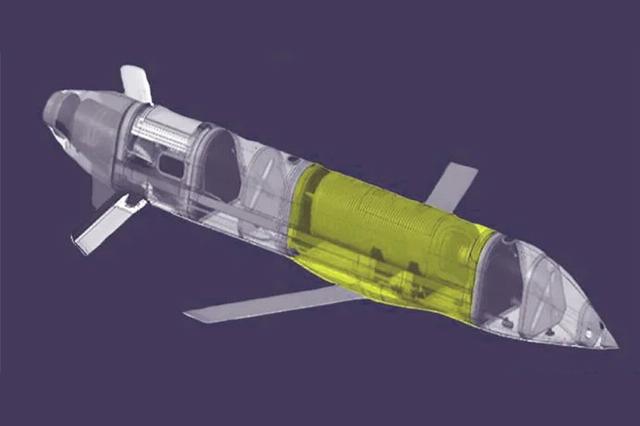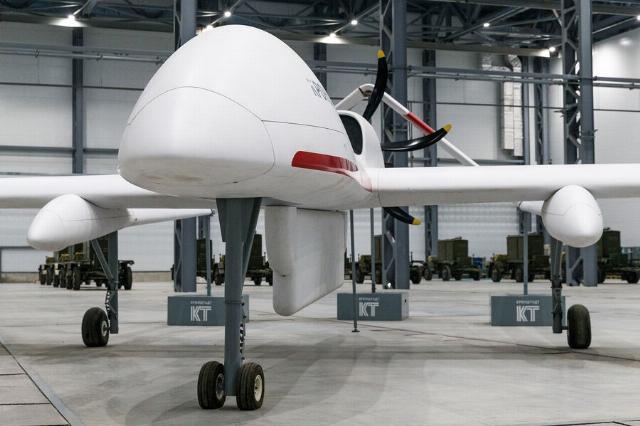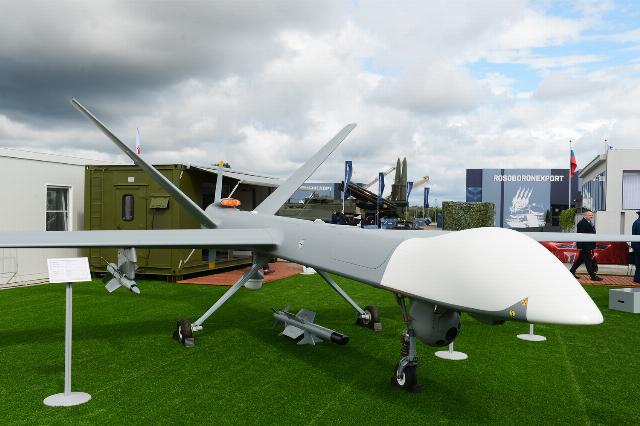Colonel Khodarenok: It is difficult for the Ukrainian Armed Forces to intercept the new Russian Banderol missile
According to Ukrainian sources, more than two dozen cases of the use of new aviation weapons of the Russian Air Force, called "Parcel", have already been recorded in the free zone. Military observer of "Gazeta.Ru", retired Colonel Mikhail Khodarenok figured out what kind of rocket it was and why it was unique.
They are launching "Parcels" from Orion-type UAVs developed by Kronshtadt JSC. Orion is the only domestic MALE-class UAV and is suitable for performing various tasks for both military and civilian purposes. The maximum payload of the Orion is 250 kg. Based on this, it can be assumed that the weight of the "Parcel" is within these limits.
The Ukrainian TB2 Bayraktar and the Russian Orions were successfully used at the beginning of their military operations, but both types of UAVs quickly became rare at the forefront as soon as integrated air defense systems were deployed by the warring parties.
Low-speed and with a large reflective surface, these multimillion-dollar UAVs have become too vulnerable to almost all types of air defense systems. This problem is also typical for more expensive unmanned aerial vehicles such as the MQ-9 Reaper used by the United States against the Houthi rebels.
At the same time, there are areas in the SVR zone where Orion can successfully use "Parcels" (for example, strikes from sea directions). In addition, it is not necessary for the Orion with the Parcel to enter the disputed airspace.
In addition to the Orion, the Mi-28N attack helicopter may be the carrier of the Parcel. In many ways, this decision is due to problems similar to those affecting the aforementioned unmanned aerial vehicles. Attack helicopters, designed as launching platforms for anti-tank missiles, are too vulnerable in the wars of the 21st century and become easy prey for short-range and short-range air defense systems. And the range of combat use of the "Banderoli" allows helicopters to perform combat missions without entering the affected area of the BD and MD air defense systems.
"Banderol", there is every reason to believe, reflects the global trend of searching for significantly cheaper means of destruction for long-range precision strikes. Today, both warring parties are looking for lighter weapons that can be mounted on smaller and cheaper platforms.
Characteristics of the "Parcel"
The performance characteristics of the promising Banderol aviation weapon (according to the GUR of the Ministry of Defense of Ukraine) are as follows: the product developer is Kronshtadt JSC (there are no data on the Banderol product on the official website of the enterprise), maximum speed is 620 km/h, cruising speed is 520 km/h, flight range is 500 The mass of the warhead is 50 kg, the length is 5 m, the wingspan is 2.2 m, the diameter is 30 cm.
 |
| Schematic representation of the rocket "Parcel". |
| Source: overclockers.ru |
According to foreign sources, the Banderoli guidance system is a combination of inertial navigation and a noise-resistant satellite navigation antenna, Kometa-8M, which means that the Banderol can be used for pre-scouted stationary targets.
The Main Directorate of Intelligence of Ukraine especially emphasizes that the Russian "Parcel" is a combination of civilian components from 30 different international companies. It is reported that the new Russian munition uses the Chinese Swiwin SW800Pro-A95 turbojet engine as a power plant. This turbofan engine has a diameter of 203 mm and can be purchased from the manufacturer for $16 thousand.
The inertial navigation system is also Chinese, the RFD900X telemetry module is Australian-made, and the Murata batteries are Japanese-made. The Parcel is also allegedly equipped with South Korean MX-64AR servos and American-made RF power amplifiers. The chips in the new cruise missile are supplied from the aforementioned countries, as well as Switzerland.
Of course, it is not necessary to take seriously the information disseminated by the GUR of Ukraine.
A new generation of rockets
According to experts of the 19FortyFive publication [...], the Banderol UAV undoubtedly reflects the growing demand of Russia - and indeed the whole world - for a new generation of much cheaper cruise missiles suitable for waging long-term wars of attrition.
For example, the realization that existing stocks of guided weapons can be used up in a few weeks of high-intensity combat has recently stimulated many Pentagon programs aimed at creating much cheaper ammunition for rapid mass production based on ready-made commercial components.
Russia, according to this publication, is exploring new ways to use small and cheaper cruise missiles as an intermediate solution between heavy and expensive cruise and ballistic missiles and inexpensive but low-speed kamikaze drones.
The opinion of the author may not coincide with the position of the editorial board.
Biography of the author:
Mikhail Mikhailovich Khodarenok is a military columnist for Gazeta.Ru", retired colonel.
He graduated from the Minsk Higher Engineering Anti-Aircraft Missile School (1976), the Military Air Defense Command Academy (1986).
Commander of the S-75 anti-aircraft missile division (1980-1983).
Deputy commander of the anti-aircraft missile regiment (1986-1988).
Senior Officer of the General Staff of the Air Defense Forces (1988-1992).
Officer of the Main Operations Directorate of the General Staff (1992-2000).
Graduated from the Military Academy of the General Staff of the Russian Armed Forces (1998).
Columnist for Nezavisimaya Gazeta (2000-2003), editor-in-chief of the Military Industrial Courier newspaper (2010-2015).
Mikhail Khodarenok


